Formerly Vice President, Wholesale, the eight-year Oatey veteran will now take on an enhanced leadership role, including responsibility for customer service and technical support Oatey Co., a leading manufacturer in the plumbing industry since 1916, has promoted Patrick Aquino to Senior Vice President, Wholesale. With nearly 20 years of experience in sales and business development Read more
Oatey

Formerly Vice President, Wholesale, the eight-year Oatey veteran will now take on an enhanced leadership role, including responsibility for customer service and technical support
Oatey Co., a leading manufacturer in the plumbing industry since 1916, has promoted Patrick Aquino to Senior Vice President, Wholesale.
 With nearly 20 years of experience in sales and business development, Aquino is a seasoned executive with deep knowledge of the plumbing industry. He joined Oatey nearly eight years ago as Northeast Regional Sales Manager and has since gained progressive responsibility as National Sales Manager; Director of Rough Plumbing and Commercial Sales; and most recently, Vice President, Wholesale. In his new position, Aquino will take on an enhanced leadership role, assuming responsibility for customer service and technical support in addition to U.S. wholesale and commercial sales.
With nearly 20 years of experience in sales and business development, Aquino is a seasoned executive with deep knowledge of the plumbing industry. He joined Oatey nearly eight years ago as Northeast Regional Sales Manager and has since gained progressive responsibility as National Sales Manager; Director of Rough Plumbing and Commercial Sales; and most recently, Vice President, Wholesale. In his new position, Aquino will take on an enhanced leadership role, assuming responsibility for customer service and technical support in addition to U.S. wholesale and commercial sales.
“Patrick is a talented and experienced leader with a proven ability for driving sales, fostering customer relationships and developing successful teams,” said Neal Restivo, Chief Executive Officer at Oatey. “I am looking forward to his expanded leadership as we continue to grow our business and support our customers.”
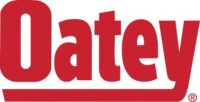
Oatey Co. to sponsor PHCC Connect 2023 Cleveland, offering tours of its local manufacturing and training facility and sponsoring Women in Industry Luncheon Oatey Co. is proud to announce its sponsorship and participation in PHCC Connect 2023 Cleveland, the premier national conference for plumbing, heating, and cooling professionals in the United States. The event will Read more
Oatey Co. to sponsor PHCC Connect 2023 Cleveland, offering tours of its local manufacturing and training facility and sponsoring Women in Industry Luncheon
Oatey Co. is proud to announce its sponsorship and participation in PHCC Connect 2023 Cleveland, the premier national conference for plumbing, heating, and cooling professionals in the United States. The event will take place on October 23-26, 2023, in Cleveland, Ohio, at the Huntington Convention Center.

As a Cleveland-based company and one of the oldest and most respected names in the plumbing industry, Oatey Co. will be a part of a showcase of Cleveland hometown brands, joining forces with Ridge Tool Company (RIDGID), Moen, and Merit Brass. These companies will be positioned in a central area of the Exhibit Hall and some will also be offering plant tours to celebrate and showcase Cleveland manufacturing.
“Oatey Co. is incredibly proud to sponsor and participate in PHCC Connect 2023 Cleveland, an excellent opportunity for industry leaders and plumbing experts to come together, learn, and share ideas,” says Patrick Aquino, Oatey’s Vice President of Wholesale Sales.
Katherine Lehtinen, Senior Vice President of Marketing at Oatey, added: “We look forward to giving attendees and media an insider’s look at the world of Cleveland manufacturing as well as Oatey’s many innovations and contributions to the industry since its founding more than a century ago.”
“We are excited to welcome these industry leaders to Cleveland and to showcase our region’s position as a hub for advanced manufacturing,” says Gordon Taylor III, Chief Sales Officer at Destination Cleveland, the destination marketing and management organization for the region. “While exploring our city and touring the innovative local businesses, conference attendees will see firsthand that Cleveland is The Land of building meaningful connections.”
As a Cleveland-based sponsor, Oatey will offer tours of its 160th Street manufacturing operations, providing an opportunity for attendees to gain a behind-the-scenes understanding of the company’s world-class facility, learning about the chemical and mechanical processes that bring the highest-quality plumbing products to life.
Then, attendees will enjoy a hands-on experience at Oatey University, a best-in-class training center for industry tradespeople, inspiring innovative new products and advancing the state of the art in the plumbing industry. Oatey social media ambassadors Nick Parlet (@plumbingsk8r), Colin Luttrel (@colintheplumberllc), Rob Broccolo (@prodrains) and Evan Berns (@re.plumb) will be on hand at Oatey University to welcome facility visitors. They are looking forward to connecting with fellow industry members, sharing their knowledge and personal stories about promoting the plumbing trade.
Once registered for the PHCC Connect Conference, attendees can sign up to participate in this tour, which will take place on Wednesday, October 25, 2023, from 7:30 AM to 11:00 AM ET.
That same day, Oatey is proud to sponsor a Women in Industry Luncheon hosted by the PHCC National Auxiliary and Women in Piping and Plumbing. Oatey’s Lehtinen will open the event, which will include an interactive panel discussion, featuring women who work in the plumbing and HVAC industries. Panelists will share their personal stories, challenges faced, and thought-provoking ideas for how the trades can become even more welcoming and inclusive.
Lehtinen will also highlight The House That She Built, an organization whose mission is to help generate awareness of the skilled trades. A new children’s book, also titled The House That She Built, educates young readers about the people and skills that go into building a home, telling the true story of a home built by all female tradespeople. Each luncheon attendee will receive a copy of the book and be asked to read it to a child in their life or a local elementary school classroom. Lehtinen sits on The House That She Built Executive Leadership Council.
After registering for the conference, attendees can sign up to attend the Women in Industry Luncheon, which will take place on Wednesday, October 25, 2023, from 12:30 PM – 2:00 PM ET. Each luncheon attendee will receive a copy of The House That She Built.
Oatey Co. recently sponsored a plumbing day at Northeast Ohio Let’s Build Construction Camp for Girls, a program for middle-school-aged and high-school-aged girls to attend a free week-long camp to explore the construction trades, architecture, engineering, and construction manufacturing through hands-on experiences and field trips. As a Premier Sponsor of the program, Oatey’s Women’s Resource Read more
Oatey Co. recently sponsored a plumbing day at Northeast Ohio Let’s Build Construction Camp for Girls, a program for middle-school-aged and high-school-aged girls to attend a free week-long camp to explore the construction trades, architecture, engineering, and construction manufacturing through hands-on experiences and field trips.
As a Premier Sponsor of the program, Oatey’s Women’s Resource Network (WRN), an associate resource group dedicated to women’s professional, personal, and leadership development, volunteered at the camp on Tuesday, June 27. Thirteen WRN members attended the plumbing day, teaching campers the art of installing Oatey’s Quadtro Washing Machine Outlet Box and other plumbing products that Oatey donated to the program. The group also hosted and led a Lunch-and-Learn about careers at Oatey, informing campers about the endless possibilities that exist for women in the construction industry.
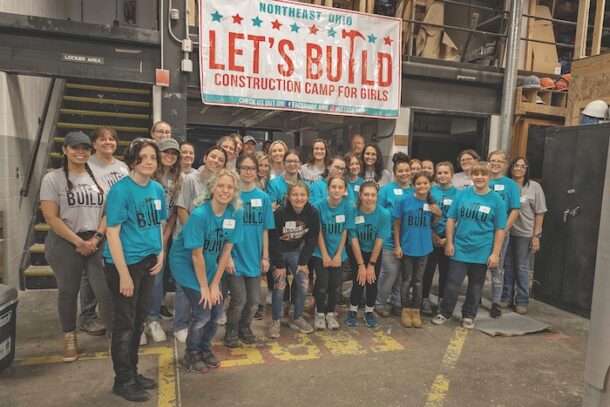
Each camper received a copy of the book “The House That She Built,” empowering them to help spread the word about careers in construction. The book educates young readers about the people and skills that go into building a home and tells the true story of a home built by all female tradespeople.
“The Women’s Resource Network is proud to support a program that aims to inspire and equip young girls with knowledge of a traditionally male-dominated industry,” says Amanda Keiber, co-chair of the WRN and Director, Corporate Communications, Oatey Co.
“The hands-on experiences offered at the camp allowed these girls to learn on their feet, build camaraderie with one another, and realize their potential. It is not just about teaching plumbing skills, but also about imparting life skills, exposing them to possible career paths, and helping them break barriers to explore new possibilities.”
Oatey learned about Let’s Build on its “” podcast featuring guest Plumber Paige, a 20-year-old Skilled Trades Advocate and Social Media Influencer, who attended another recent Let’s Build camp that took place in Lehigh Valley, PA. After learning about Let’s Build, Oatey was eager to support the NE Ohio camp, as the program aligns well with Oatey’s mission to support the trades and help grow the pipeline of talent into the industry.
“We are grateful for the Oatey Women’s Resource Network’s involvement in Northeast Ohio Let’s Build Construction Camp for Girls,” says Shelly Higgins, Camp Director of NE Ohio Let’s Build Construction Camp for Girls. “The plumbing day that the WRN members hosted was a great opportunity for the campers to learn about installing Oatey’s innovative products and gain hands-on experience.
“Oatey’s dedication to supporting the trades has created a lasting impact on the campers,” she continues. “We hope other industry leaders follow Oatey’s example and help us continue providing campers with these invaluable experiences.”

By Sean Comerford Plumber’s putty and silicone sealant are two common types of sealants used by plumbing professionals. But which one does what? And when should each be applied? This article provides a detailed breakdown of the key differences between these two popular products and when to use them. What is plumber’s putty? Plumber’s putty Read more
By Sean Comerford
Plumber’s putty and silicone sealant are two common types of sealants used by plumbing professionals. But which one does what? And when should each be applied?
This article provides a detailed breakdown of the key differences between these two popular products and when to use them.
What is plumber’s putty?
Plumber’s putty is a sealing staple for professional plumbers. This easy-to-use product will prevent the migration of water between two rigid surfaces, keeping your fixtures leak-free. A malleable, clay-like compound, plumber’s putty creates a watertight seal by filling in the space under a flange to prevent water from seeping through.
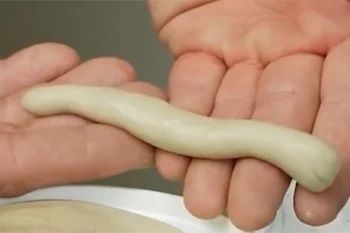
What is silicone sealant?
You’ve probably noticed the terms ‘caulk’ and ‘sealant’ are often used interchangeably. The two products serve a similar purpose, which is to act as sealing agents to fill gaps and cracks, as well as bonding agents between building materials, such as joining countertops to sink bases. Intended to prevent leaks, they are both applied to surfaces using a caulking gun, which likely explains why a sealant is technically categorized as a type of caulk.
The key distinction between a caulk and sealant? Elasticity.
— Caulk is typically made from a mixture of latex and acrylic materials, which make it more rigid and prone to shrinking when cured.
— A sealant offers superior elasticity and water resistance, because it primarily contains silicone. The silicone material allows a sealant to easily expand and contract during changing temperatures without losing its airtight/watertight seal.
Therefore, sealants are a smart choice for areas that experience frequent weather fluctuation and high moisture levels, such as kitchens, bathrooms, as well as around doors and windows.
The two most important factors to keep in mind when selecting a caulk or sealant are the temperature range and moisture level at the site of application. Silicone sealant can be applied at temperatures between 0 to 120 degrees Fahrenheit and can withstand operating temperatures of -70° F to 400° F.
4 key differences between plumber’s putty and silicone sealant
1. Dry time: Plumber’s putty has no dry time, whereas silicone requires cure time. Typically, most siliconized sealants or caulks need approximately 24 hours to cure completely or a minimum of eight hours before exposing it to water or moisture.
After plumber’s putty has been applied and the fixture put in place, the latter can be used immediately. However, if putty is being used in colder applications, we suggest waiting 10 minutes after the initial installation to confirm the product does not need an extra turn to ensure it is properly secured.
Typically, most types of sealants need approximately 24 hours to cure completely or a minimum of eight hours before exposing it to water or moisture.
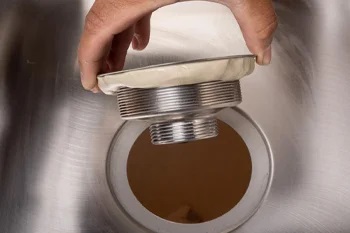
2. How it dries: Silicone sealant or siliconized caulk is an adhesive and cannot be remolded or replaced after it has dried. Plumber’s putty is an easily workable, soft, pliable, fixture-setting compound. Unlike some other sealants, plumber’s putty remains soft over time and can be easily modified after its first application.
Plumber’s putty will remain pliable when not exposed to air and can be used as a bedding compound for strainers, faucets, and tub waste and overflows once out of the container. However, if the putty is exposed to air for an extended period of time, it will harden and become brittle. Once the putty has dried, nothing can be added to regenerate the putty without affecting the quality of the product.
3. Clean-up: Plumber’s putty is also easier to clean than silicone, because it does not stick to hands and requires no additional tools. Applying silicone can get messy. As a result, many contractors carry additional products, such as a caulking gun or a silicone spray, to make the application easier. In contrast, when using plumber’s putty, you need no more than a tub of putty to get the job done.
4a. When and where to use it — Plumber’s Putty: Plumber’s putty is specifically designed for plumbing applications. It is ideal for setting faucets, sink basket strainers, shower and pop-up drains. It’s easy to wipe away after installation and will not be visible from the outside of the plumbing fixture once installed. Oatey Plumber’s Putty, for example, will last two years from the manufacture date if the lid is sealed properly.
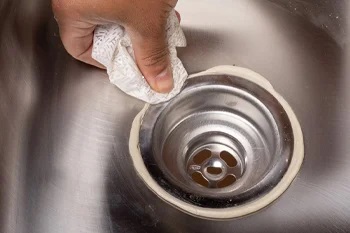
Because plumber’s putty is oil-based, it can stain porous materials, such as granite, marble, quartz and sandstone. For application on these surfaces, use a stain-free plumber’s putty, as this product is oil-free and will not stain the porous material.
Plumber’s putty is shaped by hand before it is applied to the plumbing part. Prior to using plumber’s putty, ensure all surfaces are dry and free from hardened putty, dirt, wax, oil and grease. Remove debris by wiping with a cloth, scraper or wire brush as needed and dry the surface.
Read this blog for the steps to apply plumber’s putty.
Do NOT use plumber’s putty in these instances:
- On plastics (acrylic or ABS — Acrylonitrile Butadiene Styrene), because it will affect the integrity of the material and lead to product failure.
- In any pressurized connection, such as a gasketed fitting or on the thread of pipes. Although plumber’s putty creates a watertight seal, it is not an adhesive or glue.
- To seal a leaky toilet or toilet bowl to a finished floor, because plumber’s putty will dry out in the applications and is not waterproof. Cleaners and urine can also compromise the integrity of the putty if they come in contact with one another on the bathroom floor.
- To seal windows or doors, because plumber’s putty lacks any insulating qualities
- To install a drain on an acrylic tub and/or shower uni Stain-free and regular plumber’s putty can have an adverse effect on the finish of acrylic surfaces, similar to its effect on ABS plastic materials. You should use only 100%-silicone for this application.
4b. When and where to use it — Silicone Sealant: Due to a silicone sealant’s strong adhesiveness, elasticity and water-resistant properties, it’s an excellent choice for kitchen and bath applications, including:
- bonding top-mount and undermount sinks to countertops;
- bathtub/shower surrounds, doors and drains;
- sealing gaps and seams in gutters;
- filling exterior holes made by nails or screws;
- HVAC applications.
The bottom line
Plumber’s putty and silicone sealants are both great products to use on your projects, but they each have their own set of uses and benefits.
- If you’re looking for something that will withstand frequent weather fluctuation and high moisture levels, silicone sealant might be the best option.
- On the other hand, if you need something to prevent the migration of water between two rigid surfaces, keeping your fixtures leak-free, plumber’s putty is a smart choice.
 About the author: Sean Comerford is a Technical Applications Manager at Oatey Co. He is a third-generation tradesman with nearly 20 years of plumbing experience, including serving as the lead plumber for commercial/residential new-construction, service and fire protection jobs. He holds a State of Ohio Fire Protection License for Sprinkler and Standpipe.
About the author: Sean Comerford is a Technical Applications Manager at Oatey Co. He is a third-generation tradesman with nearly 20 years of plumbing experience, including serving as the lead plumber for commercial/residential new-construction, service and fire protection jobs. He holds a State of Ohio Fire Protection License for Sprinkler and Standpipe.
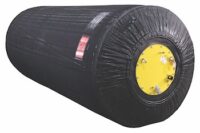
At 850 pounds and 152 inches long, the 72-120 in. Test-Ball® Plug features best-in-class design to ensure optimal performance and safety Cherne Industries, part of the Oatey Co. family of companies, today introduced its 72-120 inch Test-Ball® Plug. The world’s largest test ball, it blocks flow in the biggest pipes in sanitary and storm sewer Read more
At 850 pounds and 152 inches long, the 72-120 in. Test-Ball® Plug features best-in-class design to ensure optimal performance and safety
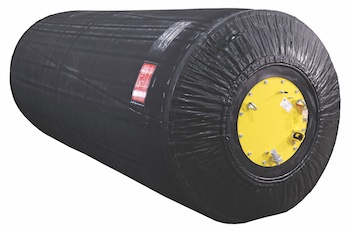 Cherne Industries, part of the Oatey Co. family of companies, today introduced its 72-120 inch Test-Ball® Plug. The world’s largest test ball, it blocks flow in the biggest pipes in sanitary and storm sewer systems, up to 120 in. The plug is the latest addition to Cherne’s comprehensive, market-leading catalog of pipe plug, blocking and testing products.
Cherne Industries, part of the Oatey Co. family of companies, today introduced its 72-120 inch Test-Ball® Plug. The world’s largest test ball, it blocks flow in the biggest pipes in sanitary and storm sewer systems, up to 120 in. The plug is the latest addition to Cherne’s comprehensive, market-leading catalog of pipe plug, blocking and testing products.
Cherne’s 72-120 in. Test-Ball Plug was carefully developed with an optimized design that offers improved performance and safety. Accommodating a back pressure of up to 6 psi, the plug weighs 850 pounds and is 152 inches long. It is made from tough, tear-resistant natural rubber and features ¾ inch eyebolts that provide superior holding strength. A field-replaceable pressure relief valve prevents over-inflation, and an aluminum end plate minimizes rust and corrosion.
For more information, visit cherneind.com.
